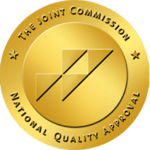Inhalant abuse is a serious problem, but many people don’t understand what it is and why it’s so dangerous. Inhalants are products found in almost any home, yet they can lead to addiction and cause serious long-term health problems. Unfortunately, younger people are more likely to use inhalants than other age groups, which means that it is important to understand the dangers of inhalant abuse as soon as possible.
What Is Inhalant Abuse?
Inhalant abuse is the intentional inhalation of a chemical substance to achieve an intoxicating or otherwise mind-altering effect. Inhalants are found in common household products like aerosols, cleaning supplies, glue, paint, and nail polish remover.
The substances many individuals use to abuse inhalants are readily accessible in day-to-day life. This often leads to experimentation and an increased risk of addiction in teens and young adults. On the other hand, people of all ages and backgrounds can abuse inhalants, but the following groups are typically more prone to do so:
- Individuals that have a limited supply of resources or are poor
- People who possess a history of alcohol or drug addiction
- Individuals who possess a history of mental illness
- Inhalant user due to peer pressure or other influences
- Individuals that are looking for a strong, immediate high
- People that are curious about how inhalants affect people
What Are the Most Commonly Abused Inhalants?
Inhalant abuse refers to the intentional inhalation or sniffing of a wide variety of substances for their psychoactive properties, with serious risks and long-term issues. Many different types of products are abused as inhalants, including common and easily found household products like glue, markers, hairspray, paint, and other aerosol sprays. Among the most commonly abused inhalants are solvents or volatile substances like gasoline, paint fats, and even cleaning fluids.
Other commonly abused inhalants include nitrous oxide, also known as laughing gas or “hippie crack,” amyl nitrite, chloroform, ether, freon, ethyl chloride, isopropyl alcohol, benzene, propane, butane, and carbon monoxide. Inhalant abuse can occur through direct sniffing of the container or fumes from rags soaked in a substance and held to the nose or mouth. This type of substance abuse carries serious risks, not just in terms of physical health but psychologically as well.
How Are Inhalants Abused?
When it comes to inhalant abuse, it’s important to know how inhalants can be ingested. There are four main ways that people abuse inhalants:
The most common way to abuse inhalants is by sniffing them directly from the source. This method is often used with aerosols and volatile solvents. It involves inhaling vapors through the mouth or nose directly from an open container such as an aerosol can.
Bagging and huffing involve inhaling chemical fumes from a cloth bag or rag that has been soaked in a chemical substance. This approach is frequently used by young people. They place the bag over their heads and inhale the chemical fumes until they experience a high.
Spraying and dusting involve using compressed gas as an inhaled drug to get high. These usually include spray paint, dusting agents, and whipped cream chargers. Due to the significant oxygen deprivation experienced when breathing the substances present in these products, this practice is risky.
Inhaling nitrous oxide, also known as “laughing gas,” directly from latex balloons is another method used by certain inhalant users. This method of abuse carries all kinds of risks associated with oxygen deprivation.
What Are the Inhalant Abuse Risk Factors?
Not everyone is at equal risk when it comes to inhalant abuse. There are certain factors that can increase the chances of developing an inhalant use disorder, and these are as follows:
The most common age range for inhalant users is 12-17, with most cases starting between the ages of 12 and 14. Studies have shown that adolescents are the most likely to try inhaling, due to peer pressure and a lack of understanding about the risks associated with inhalants.
The likelihood of developing an inhalant use disorder is higher in people with a mental health diagnosis than those without one, such as those with depression, schizophrenia, or bipolar disorder. Substance abuse problems also commonly occur alongside an inhalant use disorder. This is why it is important to treat co-occurring disorders at the same time.
Inhalant abuse is more common in men than in women. However, females are more likely to develop an addiction faster and use it for longer periods of time. This is because females have higher estrogen levels in their bodies.
If you or someone you know is exhibiting any of these risk factors, it’s important to seek professional help now in order to prevent a full-blown inhalant addiction from developing.
What Indicates Inhalant Abuse and What Are the Signs?
There are several signs that may indicate someone is abusing inhalants. These can include:
- Chemical odors: The smell of chemicals, solvents, or other inhalants on a person’s breath, clothing, or belongings.
- Changes in behavior: Rapid mood swings, changes in appetite or sleep patterns, or a general disinterest in previously enjoyed activities.
- Physical symptoms: Dilated pupils, slurred speech, and lack of coordination.
- Disorientation or confusion: A person who is under the influence of inhalants may appear confused or disoriented, or have trouble speaking.
- Unusual or erratic behavior: Engaging in risky or dangerous behaviors, such as driving while under the influence of inhalants, or exhibiting erratic or unpredictable behavior.
- Possession of inhalant-related paraphernalia: This can include empty spray cans, rags soaked in chemicals, or other items that could be used to inhale substances.
- Changes in appearance: People who abuse inhalants may appear unkempt, disheveled, or otherwise neglectful of their personal hygiene.
It’s important to note that these signs alone are not definitive evidence of inhalant abuse, but they may indicate a need for further investigation or intervention. If you suspect that someone you know is abusing inhalants, it’s important to encourage them to seek professional help.
What Are the Effects of Inhalant Abuse?
Inhalant abuse can affect the body and mind in a variety of short and long-term ways. The following are some possible consequences of abusing inhalants:
Short Term Effects
The short-term effects of inhalant abuse can vary depending on the specific substance being used, the amount consumed, and the individual’s overall health. Some common short-term effects of inhalant abuse include:
- Euphoria and a sense of excitement or stimulation
- Slurred speech
- Dizziness or lightheadedness
- Loss of coordination
- Impaired judgment and decision-making
- Hallucinations or delusions
- Nausea or vomiting
- Headache or flushing
- Muscle weakness or tremors
- Breathing difficulties
- Irregular heart rate or heart palpitations
- Inhalant abuse can also lead to accidents, injuries, or even death, particularly if the individual is operating machinery or driving while under the influence of inhalants.
Long Term Effects
The long-term effects of inhalant abuse are far more serious than its short-term effects. Inhalants can damage both the heart and brain, even after use has ended. The most serious risks from long-term inhalant abuse include:
- Irregular heartbeats
- Low blood pressure
- Organ failure
- Hearing impairment
- Chronic bronchitis
- Lung congestion
- Asthma attacks
- Severe difficulty in breathing
- Damage to the nervous system
- Impaired coordination
- Decreased alertness
- Poor judgment and decision-making capability
- Liver and kidney damage
- Chronic pain and muscle weakness
- Increased risk of infections and illnesses
- Psychological side effects like anxiety, depression, and mood changes
Inhalants are very dangerous substances that have the potential to cause significant physical harm over time if they are abused regularly. If you or someone you know is showing signs of abusing inhalants, it is important to seek help immediately in order to prevent potentially life-threatening consequences in the future. Westwind Recovery® can help you get back on track with specialized treatment plans for inhalant abuse.
What Are the Treatments for Inhalant Abuse?
If you or someone you love is abusing inhalants, it’s important to seek treatment and support. There are a variety of options available that can help those suffering from inhalant use disorders and dual diagnosis conditions that often accompany inhalant abuse cases—such as depression, anxiety, trauma, and so forth. Here are some of them:
- Behavioral therapy: Various types of therapy, such as cognitive-behavioral therapy (CBT), motivational interviewing, or contingency management, can help individuals identify and address the underlying causes of their inhalant abuse and develop healthy coping strategies.
- Medication: In some cases, medication may be used to help manage withdrawal symptoms or other health issues related to inhalant abuse.
- Support groups: Participating in support groups, such as Alcoholics Anonymous or Narcotics Anonymous, can provide individuals with a supportive community and help them develop new coping skills.
- Family involvement: Family members can play a key role in supporting individuals through treatment and recovery, and may be encouraged to participate in therapy or support groups.
- Inpatient treatment: For severe cases of inhalant abuse, inpatient treatment may be necessary to provide around-the-clock care and support.
Get Help for Inhalant Abuse at Westwind Recovery®
Inhalant abuse is a serious issue that can have devastating effects on your physical and mental health. It may have serious implications that are potentially fatal. So, if you or someone you know is abusing inhalants, it’s important to seek help immediately. There is treatment available, and recovery is possible. Contact Westwind Recovery® today to learn more about how we can help you on your road to recovery!

Dr. Deena is the Chief Clinical Officer of Westwind Recovery®, an award-winning outpatient treatment center in Los Angeles where she oversees the clinical and administrative program and treatment methods. Dr. Deena is a doctor of psychology and licensed clinical social worker since 1993. LCSW #20628. Originally from the East Coast, Dr. Deena has worked running treatment centers, worked as a therapist in psychiatric hospitals as well as school settings and currently has a thriving private practice in the LA area. Dr. Deena has appeared regularly on the Dr. Phil Show as an expert since 2003. She has also been featured on many other TV shows, podcasts and has contributed to written publications as well as podcasts.





